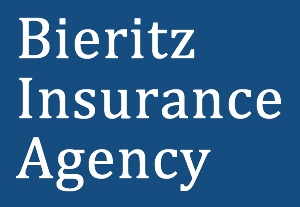Car Features That Can Lower Auto Insurance Premiums
Cars manufacturers are building cars with new features all the time and some of these can make your vehicle safer to operate. Safety features can help you save money on your car insurance. If you find yourself in the market for a new car this Spring, here are some things to consider. Check with our agents to learn if these features can save you dollars on your annual premium – the savings may be worth the additional cost.
-
Automatic or Adjustable Seatbelts (with pretensioners)
Automatic seatbelts mean that the passenger is more likely to use them and adjustability will make them more comfortable and thus more likely to keep them on. Seatbelts save lives and reduce injury. -
Daytime Running Lights
These make your vehicle more visible to other drivers. Better visibility prevents accidents. -
Antilock Brakes
An Antilock Braking System allows for better control in rain or snow or on unpaved roads. They don’t prevent skidding, but they help to prevent loss of control. -
Traction and Stability Control
A Traction Control System (TCS) or Electronic Stability Control (ESC) work similarly to antilock brakes, but they help to maintain traction in the event of a skid. -
Extra Air Bags
In addition to driver and passenger air bags, other air bags (side, curtain and rear) can be standard or extra depending on the vehicle, and can earn you extra savings on your premiums. -
Anti Theft Device
These usually qualify for savings since having one prevents attempts from theft. Just knowing there is a system equipped is enough of a deterrent to theft in most cases. -
 Night Vision System
Night Vision System
Some dashboards are capable of indicating heat signatures (from deer or other animals) within a 300meter range of the vehicle to help prevent accidents at night. -
Drowsy Driver Warning System (Lane Departure Warning)
This is a program in your vehicle that senses if/when you change lanes without using your directional and beeps to wake you up. Using your directional helps other drivers know what to expect from your vehicle and prevents accidents as well. -
Adjustable Headrests
If adjustable, headrests should be raised high enough to almost reach the top of the head, rotated forward to be close to the back of the head, and they should lock in place to give firm support in the event of a crash. -
Car Safety Rating
There are many things that effect the safety rating for a vehicle, but some of the basics include the size of the car, the type of vehicle, the type of engine and more. For information on safety ratings for vehicles, check the following links: Kelly Blue Book and Consumer Reports and the Insurance Institute for Highway Safety -
Safe Bumpers
These are bumpers that exceed the federal bumper standards for low speed crash protection. -
Tire Pressure Monitoring System (most cars built after 2007 have these)
Sensors within the tire send an indication of an “underinflation event” when the PSI falls to below an acceptable range. Underinflated tires offer a less stable ride, negatively impact your gas mileage and are prone to possible blowouts. -
Driver Safety Record
Not a vehicle feature, but something that can certainly affect your premiums. If you have a safe driving history or if you have taken a refresher driver safety class, make sure you tell your agent! Indicate this for other drivers as well.


